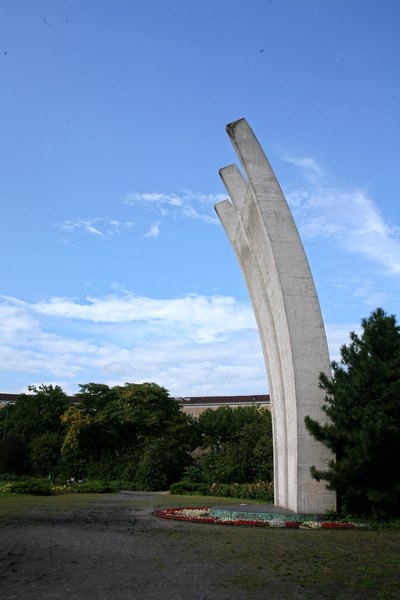
Berlin Airlift Memorial at Tempelhof Airport U-Bahn Platz der Luftbrucke 52.484141 13.387412
t was “the most generous act of any people, anytime, anywhere, to another people,” its chief administrator declared. It was “among the most noble experiences in human affairs,” its representative in Europe said. It was “the most staggering and portentous experiment in the entire history of our foreign policy,” the young Arthur Schlesinger, Jr., who served on its staff, wrote. Foreigners concurred. It was “like a lifeline to sinking men,” according to the British Foreign Secretary Ernest Bevin. It “saved us from catastrophe,” a manager at Europe’s largest tire factory declared. Sixty years after Secretary of State George C. Marshall outlined the need for economic aid to stimulate European recovery, in a speech at Harvard University’s commencement on June 5, 1947, the plan named after him continues to be fondly remembered in donor and recipient countries alike. In our own time, liberal internationalists have periodically called for new Marshall Plans. After the collapse of Communism, some economists maintained that the former Soviet Union was in need of one. More recently, there has been desultory talk of Marshall Plans for Afghanistan, Iraq, and even the West Bank and Gaza. When critics lament the allegedly modest sums currently spent by the American government on foreign aid, they often draw an unfavorable contrast with the late nineteen-forties. Yet some people, at the time of its inception and since, have questioned both the Marshall Plan’s motivation and its efficacy. Was it really so altruistic? And did it really avert a calamity